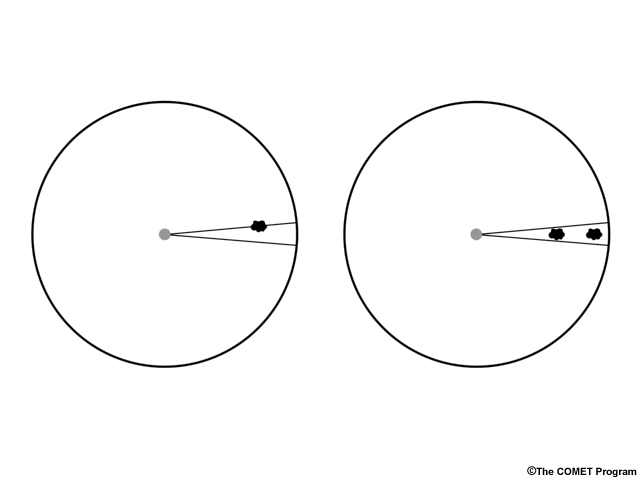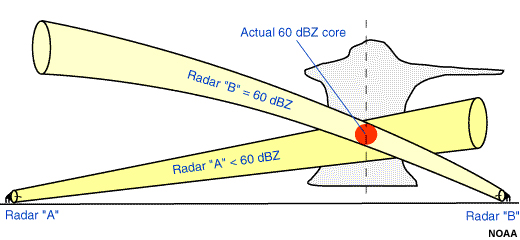Produced by The COMET® Program
Limitations » Processor Assumptions » Uniformity

The radar reflectivity equation assumes that all particles are distributed evenly throughout the sample volume.
However, if small regions of precipitation fill only part of the beam, lower-than-actual reflectivity values will be displayed because the scattering is averaged over the entire width of the beam in that location. Precipitation that evenly fills the beam will produce a good reflectivity estimate.

This is why two adjacent radars may come up with a different reflectivity value for the same location. For example, the area in red has a true reflectivity of 60 dBZ. Notice that only "Beam B" is completely filled with 60 dBZ, and would therefore assign a value of 60 dBZ to that location. "Beam A" is larger due to the longer range, and thus contains the 60 dBZ core plus weaker echoes surrounding it. This means that radar "A" will assign a reflectivity value less than 60 dBZ at the range indicated by the dotted line.
© Copyright 2012-2017, The University Corporation for Atmospheric Research.
All Rights Reserved. Legal Notices.